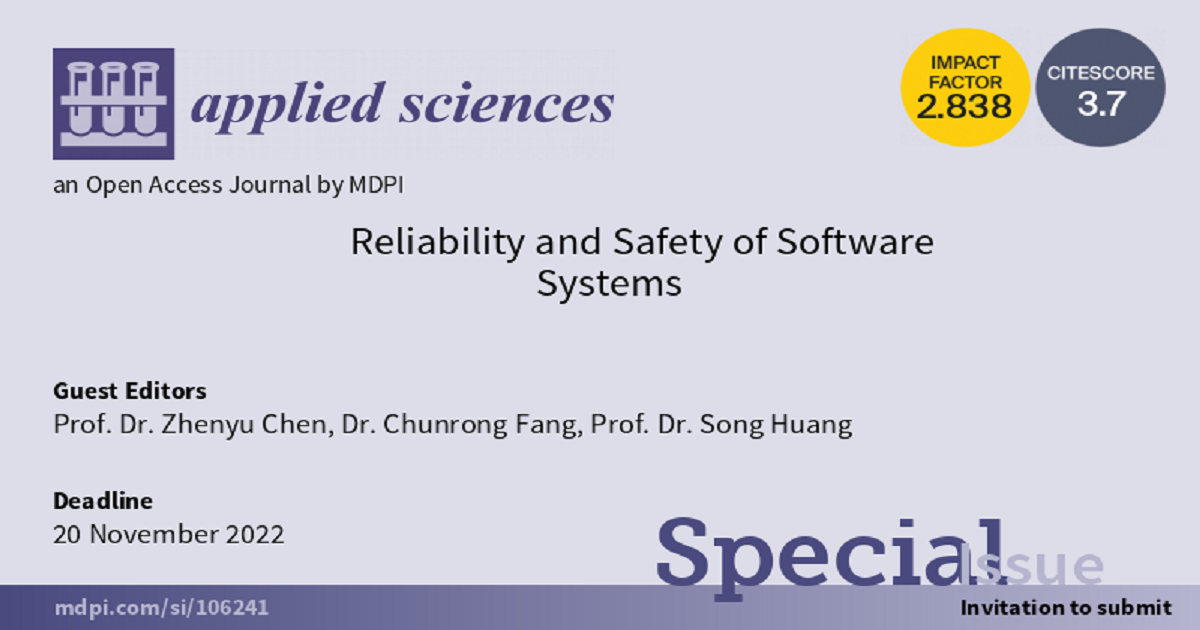Reliability and Safety of Software Systems
A special issue of Applied Sciences (ISSN 2076-3417). This special issue belongs to the section "Computing and Artificial Intelligence".
Deadline for manuscript submissions: closed (20 November 2022) | Viewed by 19481

Special Issue Editors
Interests: collective intelligence; deep learning testing and optimization; big data quality; mobile application testing
Interests: crowdsourced testing; mobile application testing; deep learning testing
Special Issue Information
Dear Colleagues,
Software has played a significant role in people’s daily life, society operation and all kinds of industries, including critical fields. However, with the rapid iteration of sofyware products, the quality assurance problem has attracted much attention from both academia and industry.
Artificial intelligence-based technologies promote software testing effectiveness and efficiency in many areas, including test generation, test report analysis, code analysis, etc. Artificial intelligence-based approaches achieves much access in software quality assurance.
Moreover, artificial intelligence based algorithms have been applied in many fields, and quality is also significant. Distinct from traditional software systems, AI software systems require distince approaches for conducting software testing.
This Special Issue invites topics broadly across reliability and safety of software systems, and some specific topics include but are not limited to the following:
- Artificial intelligence technologies for software quality assurance;
- Quality assurance of artificial intelligence-based software systems;
- Software system semantic mining and understanding;
- Human computer collaboration for software testing.
Prof. Dr. Zhenyu Chen
Dr. Chunrong Fang
Prof. Dr. Song Huang
Guest Editors
Manuscript Submission Information
Manuscripts should be submitted online at www.mdpi.com by registering and logging in to this website. Once you are registered, click here to go to the submission form. Manuscripts can be submitted until the deadline. All submissions that pass pre-check are peer-reviewed. Accepted papers will be published continuously in the journal (as soon as accepted) and will be listed together on the special issue website. Research articles, review articles as well as short communications are invited. For planned papers, a title and short abstract (about 100 words) can be sent to the Editorial Office for announcement on this website.
Submitted manuscripts should not have been published previously, nor be under consideration for publication elsewhere (except conference proceedings papers). All manuscripts are thoroughly refereed through a single-blind peer-review process. A guide for authors and other relevant information for submission of manuscripts is available on the Instructions for Authors page. Applied Sciences is an international peer-reviewed open access semimonthly journal published by MDPI.
Please visit the Instructions for Authors page before submitting a manuscript. The Article Processing Charge (APC) for publication in this open access journal is 2400 CHF (Swiss Francs). Submitted papers should be well formatted and use good English. Authors may use MDPI's English editing service prior to publication or during author revisions.
Keywords
- software engineering
- software testing
- software quality assurance
- artificial intelligence







